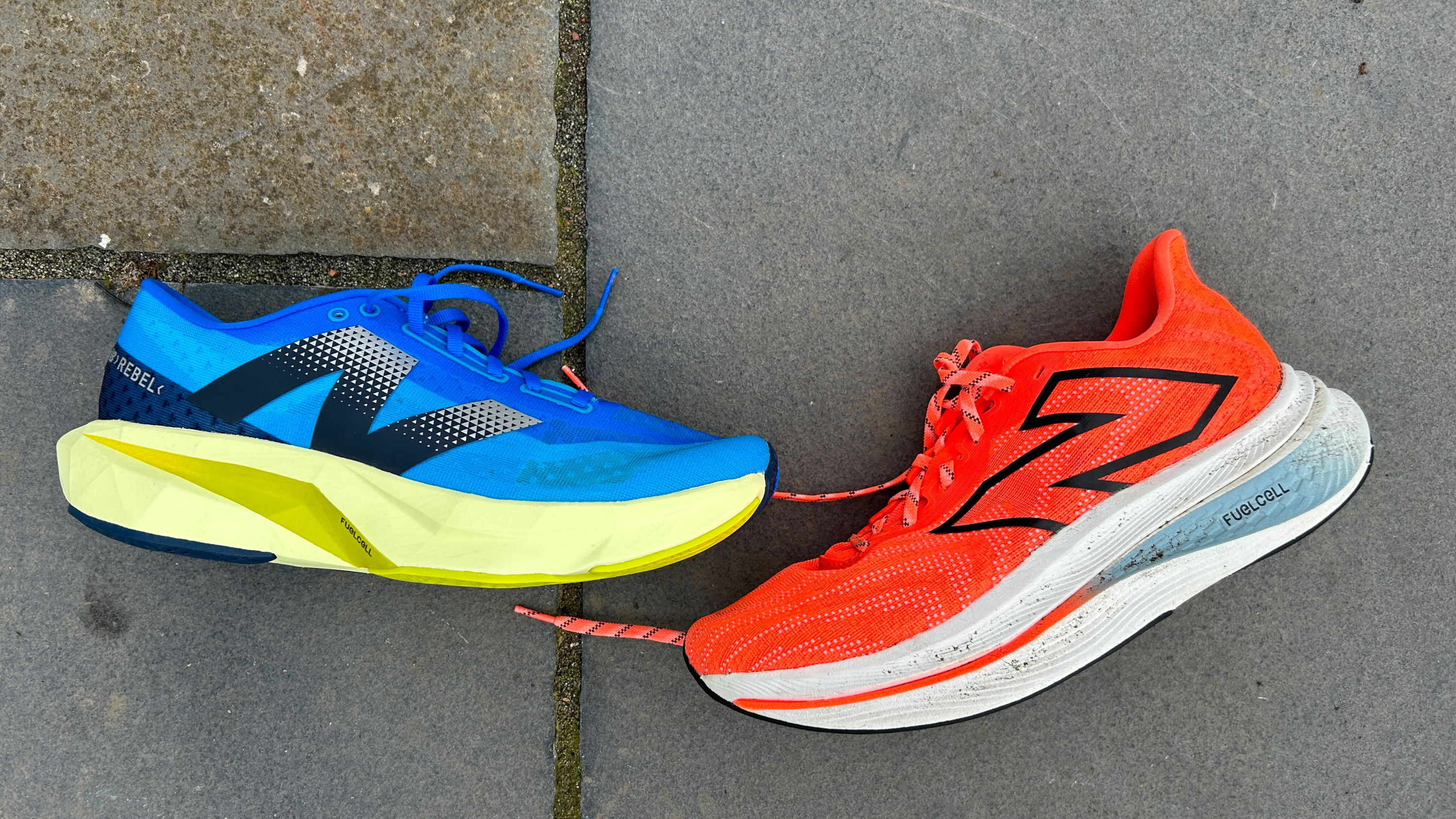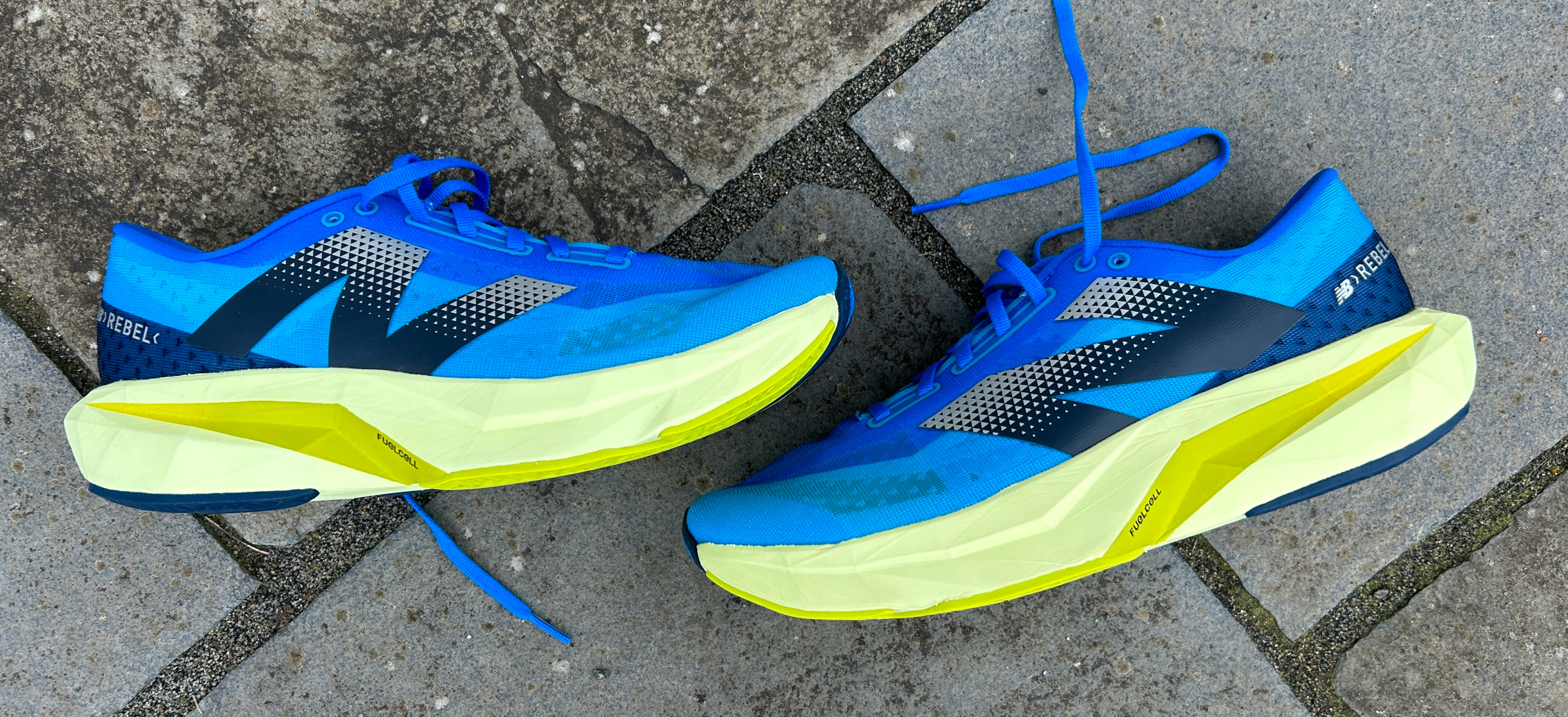Our Verdict
The New Balance FuelCell Rebel v4 is a more stable and comfortable shoe than its predecessors, but still very light, making it one of the most versatile plate-free running shoes available.
For
- Versatile ride
- Light
- Good value
Against
- No plate for faster runs
- Some may want more cushioning
You can trust Coach
In a world where many of the best running shoes are getting more complicated and expensive, the New Balance FuelCell Rebel v4 is a breath of fresh air. It has a simple design and a reasonable price, and delivers a versatile and enjoyable ride for a range of training runs.
It’s the perfect option for runners seeking an all-rounder that eschews the trends of a high midsole stack and a plate. Those features have their place in shoes, and the best all-rounder on the market is the Saucony Endorphin Speed 3, which has both—though if you prefer a simpler and cheaper shoe for daily training, the Rebel v4 can do it all.
New Balance FuelCell Rebel v4: Price And Availability
The New Balance FuelCell Rebel v4 launched in the US in January 2024, with the global launch on February 29. It costs $140 in the US and £140 in the UK, which is a rise of $10/£10 on the price of the New Balance FuelCell Rebel v3.
How I Tested This Shoe

I’ve run 35 miles in the Rebel v4, using the shoe for a mix of daily training, including a track session, two easy runs and a 15-mile long run moving from easy to marathon pace. I have also tested every past generation of the Rebel, and most of New Balance’s other FuelCell shoes like the SC Elite v4 and SC Trainer v2.

Design And Fit
The Rebel has always been a lightweight shoe with a fairly low stack height, and that remains the case with the Rebel v4, though the stack has risen slightly. There’s also a new version of New Balance’s FuelCell foam in the midsole. This is now made from a blend of EVA foam and a Peba-based material, and while it’s not the full Peba midsole you get on the New Balance SC Elite v4, it’s a softer, bouncier material than the FuelCell used in past Rebels.
It’s also lighter, which means that although the shoe’s stack height has risen to 30mm at the heel and 24mm at the forefoot, the Rebel v4 is still only 7.7oz/219g in my UK size 9.5. That makes it one of the lightest shoes of the 50-plus pairs I’ve tested in the past year, and it’s actually around 1oz lighter than the New Balance SC Elite v4 racing shoe—though the Elite has a stack height of 40mm at the heel.
The Rebel v4 is also wider than its predecessor, which helps make it more stable, but sticks to the same 6mm drop. This is the biggest update to the Rebel since its launch, but the new shoe retains the lightweight, fun feel of the line.
Sign up for workout ideas, training advice, reviews of the latest gear and more.
I’ve run in a UK 9 when testing previous versions of the Rebel, but opted for a 9½ in the Rebel v4 because the Rebel v3 was tight around my toes. The new shoe has a wider fit around the front of the midfoot that was actually a little loose for me because I have a narrow foot, but overall the fit was good when I went half a size up. That’s in my UK size though, and if you are using US sizing you may be best sticking with your usual size because of the way New Balance converts US to UK sizes.
There is minimal padding on the tongue and collar of the shoe, which has a lightweight mesh upper. The lack of padding means the hold around the back of the shoe is quite loose, but I didn’t experience any rubbing, and the shoe didn’t irritate my achilles tendon, which I sometimes have trouble with in highly padded shoes.

The Rebel v4 doesn’t have a full rubber outsole and there’s a lot of exposed foam in the middle of the shoe but there is good coverage of the forefoot, plus two large rubber sections at the heel, so the main impact areas are covered. The shoe gripped well for me on my runs, even in wet conditions.
Running Performance
I loved the Rebel v3 as a lightweight daily trainer that could handle any kind of run—up to a certain distance. It felt nimble and speedy, but lacked the cushioning and stability I’d want for running more than 10-12 miles regularly.
The Rebel v4 has a different feel underfoot, but matches the performance of the Rebel v3 for short stuff, while adding comfort and stability for long runs. Some runners may want more foam underfoot for long runs, but during a 60-mile week of marathon training the Rebel v4 felt comfortable to me every time I used it. This included my 15-mile Sunday long run and a 40-minute recovery run the day after a track session.

It’s not as nimble a shoe as its predecessor, in that you notice the extra ground contact of the wider design. You can feel the support on either side of your foot, which is great for easy runs, and it doesn’t diminish the shoe’s performance for fast stuff. I did a track session running one mile and 400m reps in the Rebel v4 and it was sprightly enough that I didn’t miss the extra bounce of propulsion of a plated trainer like the Endorphin Speed 3.
You will get more pop from one of the best super-trainers with a plate, or one with a full Peba-based midsole and a higher stack, but the Rebel v4 felt great underfoot and the shorter stack and simple design were appealing. I’ve had no trouble doing a lot of training in plated shoes, but many runners now prefer to reserve plated shoes for race day and key speed sessions, with the Rebel v4 having a more natural feel.
Is The New Balance FuelCell Rebel v4 Worth It?

The Rebel v4 is an excellent shoe and the best daily trainer available without a plate. I even prefer it to the Asics Superblast, which is an outstanding shoe with more bounce than the Rebel, but it’s more expensive and has a high midsole stack, which makes it more unwieldy unless you’re on flat, straight roads.
I’d say $140/£140 is pretty good value too, given that the super-trainers you’d use for the same kind of runs can now cost more than $200/£200. If you’re happy to spend that money and use a plated shoe, the Saucony Endorphin Speed 3 or Adidas Boston 12 (which has rods, rather than a plate) are excellent all-rounders that are better than the Rebel v4 for longer hard runs in particular. I found New Balance’s own super-trainer, the SC Trainer v2, cumbersome and I prefer the Rebel v4 as an all-rounder.
Other impressive plateless all-rounders include the Puma Velocity Nitro 3 and Asics Novablast 4, which are more cushioned and comfortable for easy runs but lack the lightness and pop of the Rebel v4 for faster stuff. The Hoka Mach 5 is another great shoe without a plate and a smoother, more rockered ride than the Rebel v4, but the Rebel v4 is springier.

Nick Harris-Fry is a journalist who has been covering health and fitness since 2015. Nick is an avid runner, covering 70-110km a week, which gives him ample opportunity to test a wide range of running shoes and running gear. He is also the chief tester for fitness trackers and running watches, treadmills and exercise bikes, and workout headphones.

